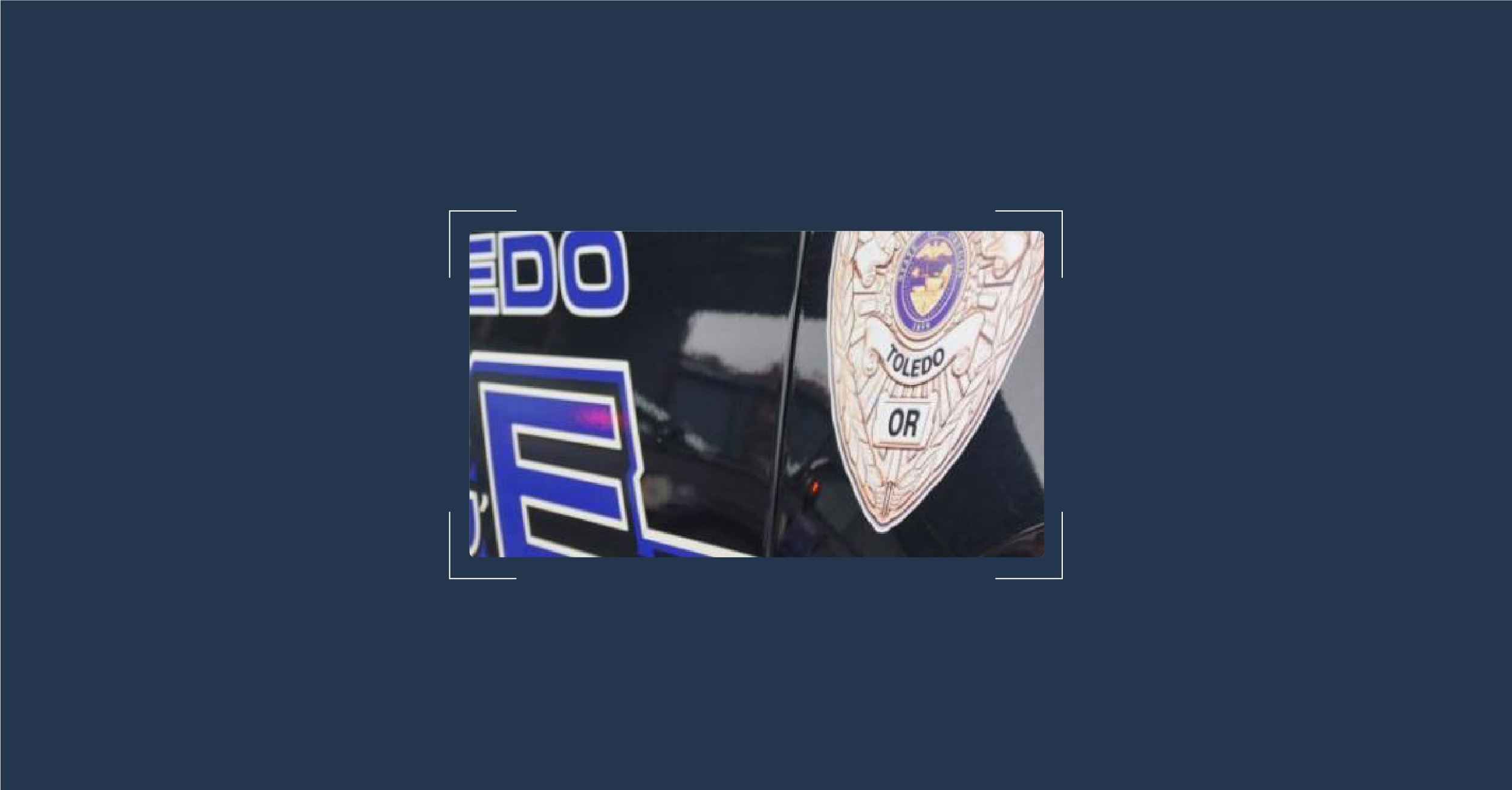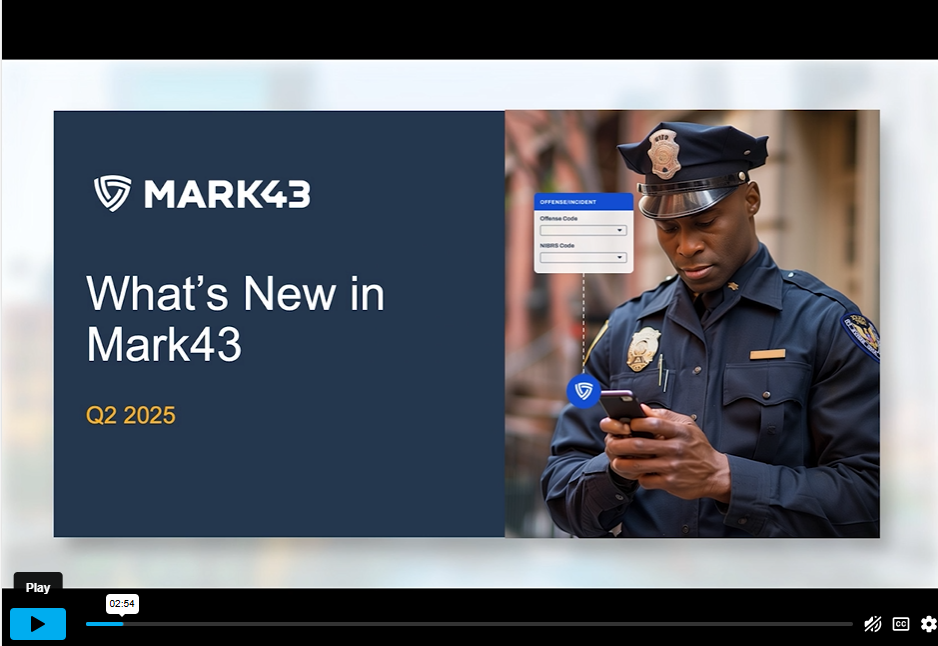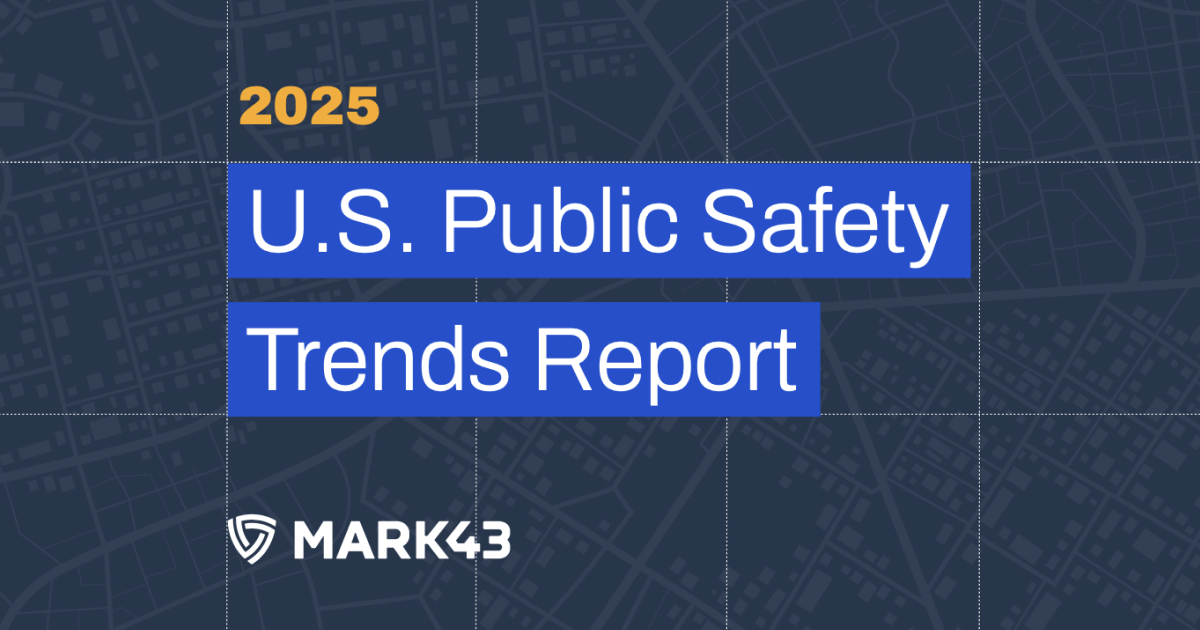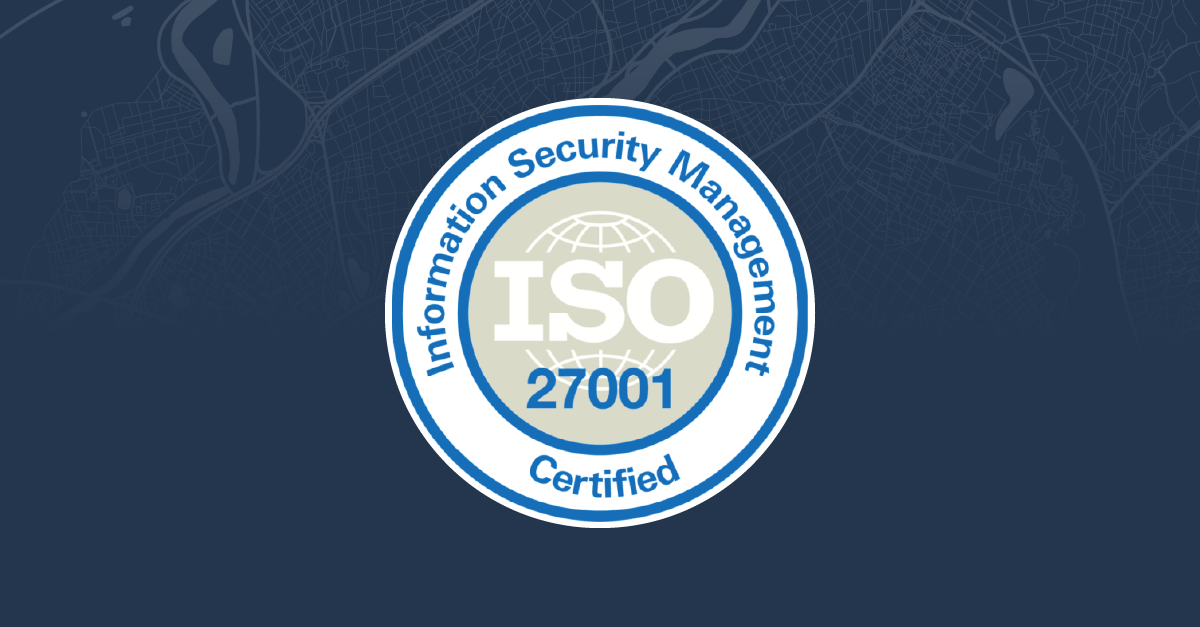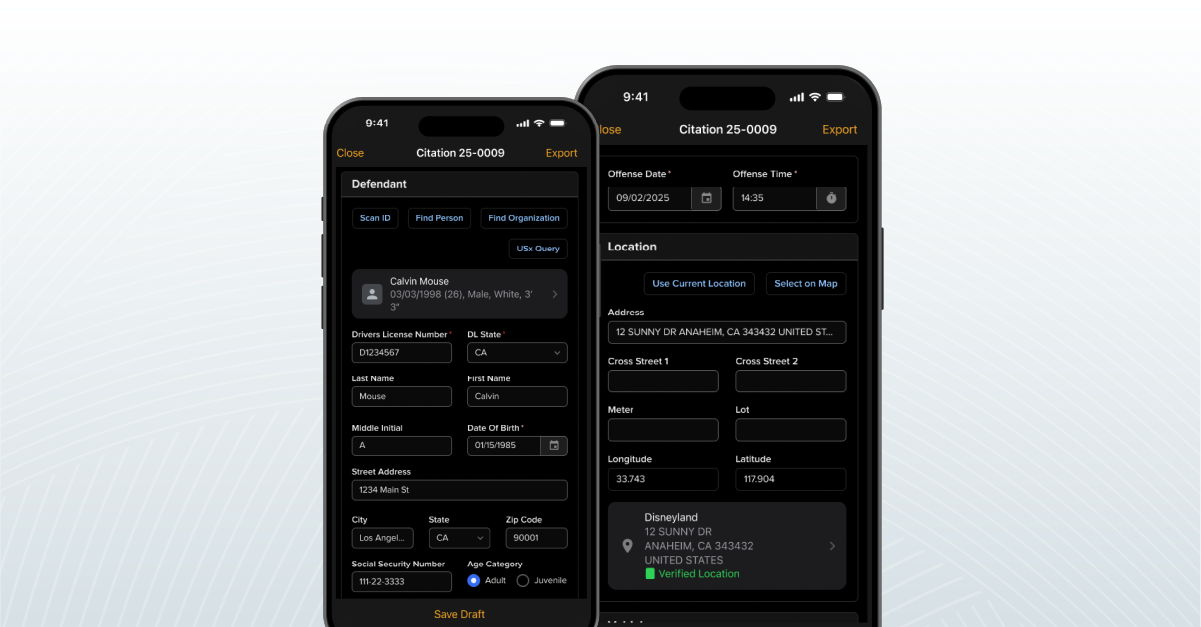By; Matt Polega

Officer reviewing reports in vehicle. Photo credit: Mark43
UK police forces are facing increasing pressure to do more with less. They must now deliver an accelerating number of services including vulnerability response, community engagement and other responsibilities in addition to their traditional policing work.
They contribute to nationwide efforts such as the initiatives to decrease knife crime and stop violence against women and girls. Meanwhile, they are expected to respond faster and coordinate across forces – all while needing to demonstrate their effectiveness, efficiency and legitimacy.
This growing mountain of responsibilities may at times seem insurmountable. But with the right approaches, police forces can leverage technology as a force multiplier to help support safer communities.
1) Leverage technology to drive efficiency
Police forces are doing their best to meet growing demand, but at some point, tactics can only do so much, and policing will not take a giant leap forward with 1% and 2% improvements.
However, technology is evolving quickly. In the early 2000s, cloud changed the game. Now AI is opening the door to new possibilities, and AI technology is quickly advancing. As a new National Police Chiefs’ Council report notes: “Police reform and rapid advancements in technology offer a once-in-a-generation opportunity to deliver significant, tangible change across policing.”
Police forces such as the Cumbria Constabulary are already modernising their technology to enhance efficiency, reduce duplication, streamline workflows and allow officers to spend less time on paperwork and more time with the public. Shrewd police force DDAT leadership everywhere are well-positioned to identify new technologies and use cases.
2) Enable cross-force collaboration
In recent years, the UK government has emphasised the importance of collaboration between police forces through such initiatives as the Strategic Policing Requirement and Policing Vision 2025, which promote interoperability and joint action against cross-border threats.
But if you are not natively sharing information, you are not working together.
Employ modern, cloud-native technology to make real-time reporting and data sharing possible. Adopt open, RESTful APIs to simplify and expedite partnership and collaboration. That way, you won’t have to wait on a middleman. You can make vital integrations quickly and efficiently – enabling greater collaboration, richer insights and better public safety outcomes.
If your technology suppliers are giving you anything less, then they are not meeting the mark.
3) Gather intel to uncover better approaches
Ask yourself if there are aspects of your operation that are less than ideal. Inquire whether your counterparts at other police forces have faced similar issues and how they addressed them.
We have found that UK police forces are extremely willing to host one another for sessions to share what’s working for them, what’s not and how best to manage their suppliers.
Such communication and collaboration open the door to continuous improvement.
4) Reduce risk with redundancy
Black swan events will happen. Prepare for that day when your organisation faces the unexpected by preparing a response plan, and the people and resources to execute it.
Keep in mind that in IT, two is one and one is none. So, avoid plugging your mission-critical technology into the same outlet as your air-con units. It will make you vulnerable to outages.
Use cloud-native technology – which provides network, geographic and data redundancy – to remove infrastructure risk. Now all you need is an internet connection to remain operational.
5) Use data to build trust and engagement
Our work in the UK has also taught us that trust and legitimacy are key staples of UK policing.
Ensure you are making decisions based on reliable data sets. Leverage systems that capture accurate data and offer users pointers and nudges to help them ensure data is correct.
Employ systems that help you tell your story to the community and/or other audiences, like the Home Office. This is particularly essential when budgets are tight and you need to advocate for more resources.
The bottom line
Waiting and hoping that the top line of your budget will grow is not a winning strategy.
Leveraging technology is not only a mandate, but the only way out of what is a challenging situation for many forces.
Do police forces still need to rely on well-tested, policy, people and procedure? Of course. But technology can make those people, policies and procedures more efficient, more impactful and more meaningful to the communities that need them.
Original Story: https://emergencyservicestimes.com/2025/10/09/police-are-facing-mounting-pressures-technology-can-bridge-the-gap/


